The Shan are a people who have endured many struggles. Thus, a historical overview of the Shan provides insights into the very heartbeat of this people and helps clarify to their current problems.
Quite a number of Shan people consider many of the peoples of Southeast Asia (including the Thai, the Khmer of Cambodia, and the Lao of Laos) to be descended from the earliest Shan.
 |
 |
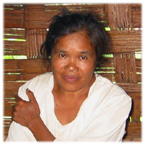 |
![]() The Shan in Burma
The Shan in Burma
From A.D. 1287 to 1604, the Shan controlled much of northern Burma. This rule ended in 1604 when the Burmese took over the land. In 1886 Burma became part of British India. Years later, in 1922, a new order was established when the British created the Federated Shan States and the Federated Shan States’ Council. In 1937 they were given self-government within the British Commonwealth.
The Federated Shan States were made up of 34 states recognized by the British. Traditionally, Shan resided in various territories (states) governed by saophas (princes).
World War II brought hardship, as both the Japanese and the Allies attacked Shan villages, destroying many of them. In 1943, the Japanese captured 32 of the 34 Shan states. The British regained peaceful rule after the war was over, but the sun was about to set on their Empire. The British government no longer had the resources to maintain many of its colonies and decided to begin granting them independence. The question for many Shan leaders was whether to join a union with an independent Burma or to seek their own separate country.
In the end, union with Burma won out. On February 12, 1947, the Burmese nationalist leader Aung San and other ethnic leaders signed the historic Panglong Agreement in the Shan State. This agreement set up guidelines for the governing of ethnic minority groups in the Union of Burma, including the Shan, and gave the Shan State the right to secede from the Union after ten years. Only months after the signing of the agreement, however, Aung San and a number of the other leaders were assassinated, leaving the budding nation in a state of chaos. In order to promote unity, Sao (prince) Shwe Thaike was given the post of the first President of the Union of Burma, which formally achieved its independence in early 1948.
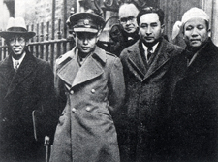 |
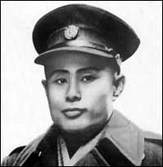 |
Yet soon afterward the Nationalist Chinese army, fleeing the Communists, invaded the Shan states, and the fighting continued until a civil war erupted. A Shan nationalist movement developed, and the Burmese government became uneasy as the date given by the Constitution authorizing secession approached. To avoid any attempt by the Shan to secede, the Burmese military seized power in 1958.
On April 24, 1959, the 34 Shan saophas surrendered their rule and the Shan states became the Shan State, administered by an elected state government. In 1960 the Shan agreed that for the Union of Burma to survive, the 12-year-old Constitution would need to be amended. This suggestion was met with widespread support; however, on March 2, 1962, Burmese General Ne Win carried out a coup d’etat and took control of the Union of Burma, capturing and killing many government leaders, including many Shan saophas. The cause of the coup was not revealed, but many believed that it was to prevent Burma’s government from being changed to a true federal one, because any such change would have given ethnic minorities more political equality with the Burmese.
There is a shortage of information on the period from 1962 through the early 1990’s, when the Burmese government was controlling and oppressing the Shan State. With drug lords, communists, tribal groups, and Shan nationalists each competing for their own agendas, the Burmese military gradually gained more control of the Shan State.
In 1988, the Burmese government promised democratic elections, the first in the country in 30 years. In 1990, to the government’s shock, the National League for Democracy, led by Aung San’s daughter Aung San Suu Kyi, captured 80% of the seats in the new parliament. The Shan Nationalities League for Democracy, an independent organization allied with the NLD, won close to 20% of the votes nationwide and all of the seats from the Shan State. The government voided the elections in order to retain power and placed Aung San Suu Kyi (who was awarded the Nobel Peace Prize in 1991) under house arrest, where she has spent most of the last 15 years.
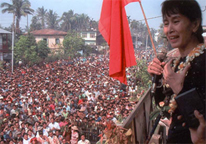 |
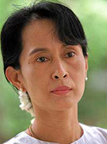 |
 |
That period has also witnessed continued conflict in the Shan State. Open fighting between the Burmese military and Shan militia groups (The Shan State Army-North, the Shan State National Army, both of which have had ceasefires in place with the SPDC for many years. The cease fire with SSNA broke down this year. The ceasefire with SSA(N) is still holding but it is very fragile, and the Shan Army South), as well as between the Shan militias and those of other ethnic groups (such as the Wa and the Kayin), has caused thousands of Shan to flee Burma for Thailand and thousands more to be internally displaced within the Shan State. In addition, the Shan militias often demand taxes be paid to them as well as to the Burmese government. The production, trafficking, and use of drugs such as opium, heroin and methamphetamines plagues the state, and AIDS is becoming an increasing problem.
Most recently, the Burmese government arrested ten prominent Shan leaders in February 2005, some of whom remain in prison. Adding to the volatility of the situation, a group of Shan expatriates declared independence for the Shan State in April 2005. This declaration, while welcomed by many ordinary Shan, has not been well received by Shan leaders residing in Burma and has received little attention from the international community. Given the many pressures facing them, the Shan appear likely to face continued uncertainty and hardship for the foreseeable future.


